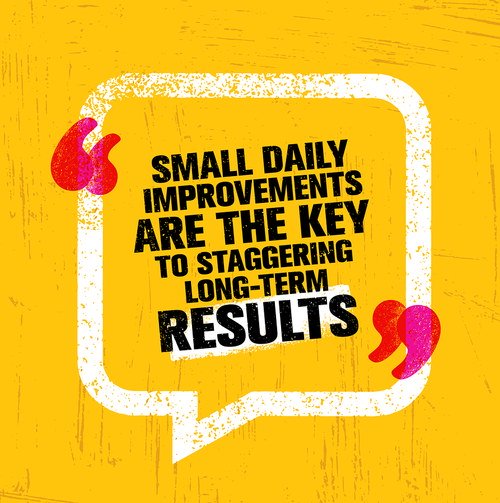Some of our nation’s best-run business organizations are driven by a compelling principle the Japanese call “Kaizen”—the ongoing, systematic, incremental improvement in the way things are done. Many companies have adopted one or more formal methodologies to achieve this “continuous improvement.” However, these powerful strategies are rarely considered by small-business owners—a fact I hope to change!

Four Improvement Methodologies
Below I’ve listed four widely used business-improvement methodologies and my layman’s description of their essential nature and purpose. Keep in mind that these methods aren’t just for big organizations. They also apply to YOU and your everyday business processes such as marketing, hiring, production, customer service, order fulfillment, and so forth. They are relevant to both service and product-based companies. They can be applied in the office, the retail store, or on the production line. Think about how each may be used to improve YOUR business!
- Six Sigma – Every system or process in your business yields an end-result that either falls within a range of acceptability, or does not. Six Sigma measures how often a process meets the required specifications or expectations. It seeks to improve the quality of a process by identifying and minimizing errors, excessive variation, waste, and rework.Six Sigma is a statistical term (six standard deviations) that represents near perfection—3.4 errors per one million opportunities-for-error. Thankfully, airlines have achieved better than Six Sigma, fewer than 3.4 crashes per million flights. Don’t worry; you don’t have to know statistics to benefit from this method!Typical small-business systems and processes use common sense and trial-by error solutions to achieve about 2-3 Sigma, or one error per 5-15 opportunities—a profit killer! You would be surprised to learn the number of problems and amount of rework that occurs every day in your business regarding customer invoices, widgets manufactured, applications processed, products installed, and so forth.Applying Six Sigma strategies to your business systems will enable you to get errors and rework below one percent and dramatically boost profit. Most of the hidden waste in your business can be eliminated if you know what you are looking for. And trust me, it’s everywhere!
- Theory of Constraints – Every process within a business has a bottleneck or weak link—constraint—that diminishes the output of the process. By focusing improvement efforts on the weakest area of a process (or the weakest system of the business), you will achieve the greatest impact on sales, customer satisfaction, and profit.Constraints that limit output can be physical, such as the capacity of a machine, the number of people working on a task, weather, or availability of materials. Non-physical constraints might include a company policy, attitudes of employees, or limited product demand. In other words, constraints reduce the output speed, or throughput, of your business systems and processes.If you eliminate the bottleneck or strengthen the weak link, you will not only elevate the system but the entire business. For example, a single forklift in a warehouse prevents truck-loading from keeping up with shipping demands; it is a bottleneck. By adding a second forklift, loading is no longer a constraint to the process and all scheduled shipments go out on time. Sales throughput is increased. There are other ways to eliminate this constraint besides buying a second forklift. Can you think of any?
- Lean Thinking – In Lean Thinking, a step in a process is said to be “value-added” if it ultimately benefits the customer, and they would be willing to pay for it. Things that do not add value to the customer such as idle time, inspection, mistakes and rework, overproduction and storage of inventory, and unnecessary handling or movement, are considered waste. They add needless costs to a product or service. For example, a step to “touch up” furniture scratched in the delivery process (non-value-added task) should be eliminated by measures that would prevent the scratches in the first place.
- Box Theory™ – Box Theory™ is a methodology that breaks your business functions down to manageable systems or “boxes,” concentrating on the vital few that drive success, and elevating them to higher-performance levels. You improve business results by applying the basic principles of Six Sigma, Lean Thinking, and the Theory of Constraints to your core systems and processes (the boxes). The Box Theory™ Way is simple and intuitive, patterned after nature’s processes. Improvement efforts focus on six essential areas—process, components, people, quality, speed, and measurement. Box Theory™ is specifically designed for the budgets and busy schedules of small-business owners and entrepreneurs, like you!
Continuous Improvement is Endless
Remember, without a conscious effort to improve quality and efficiency—using recognized principles and techniques—you will hover in the 2-3 Sigma range and lose a significant portion of your potential profit. Effective business systems unquestionably pay for themselves many times over, and they’re actually easy to develop once you know how!
Don’t let myths about process improvement prevent you from taking the next step. Entrepreneurs and business owners everywhere will eventually have to learn these principles to stay competitive and excel in the 21st century. I hope you won’t be left behind.







